Scottish Household Survey 2020 - telephone survey: key findings
A summary of the key findings from the Scottish Household Survey 2020 telephone survey.
Section four - Internet
The results of the SHS 2020 telephone survey are not directly comparable to SHS results for previous years. Please see Introduction for more detail.
93% of households had access to the internet (Table 4.2). The proportion of households with internet access varied by deprivation. Only 87% of households in the 20% most deprived areas had access to the internet whereas almost all households (99%) in the 20% least deprived areas had access to the internet.
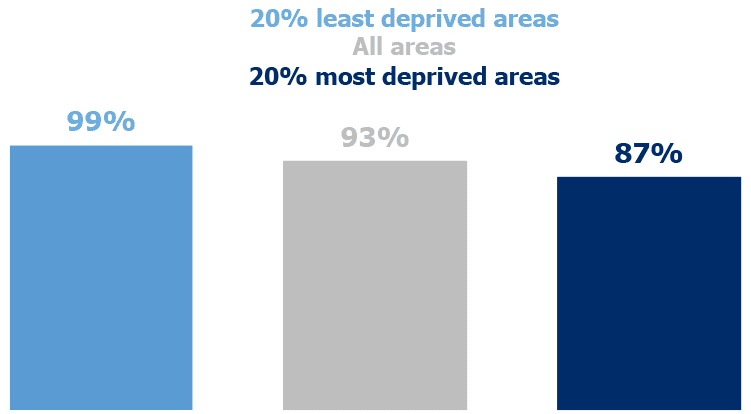
The proportion of households with internet access also varied by household type (Table 4.5). Single pensioner households were least likely to have internet access (70%), followed by older smaller (91%) and single adult (92%) households. Older smaller households are those with one adult under pensionable age and one of pensionable age, or two adults of pensionable age, and no children.
21% of social rented households did not have access to the internet at home (Table 4.3). In contrast, only 5% of owner occupied households and 2% of private rented households had no access to the internet at home.
92% of adults used the internet (Table 4.9).
Internet use was lower in the 20% most deprived areas, with 83% of adults using the internet compared to 96% of adults in the 20% least deprived areas.
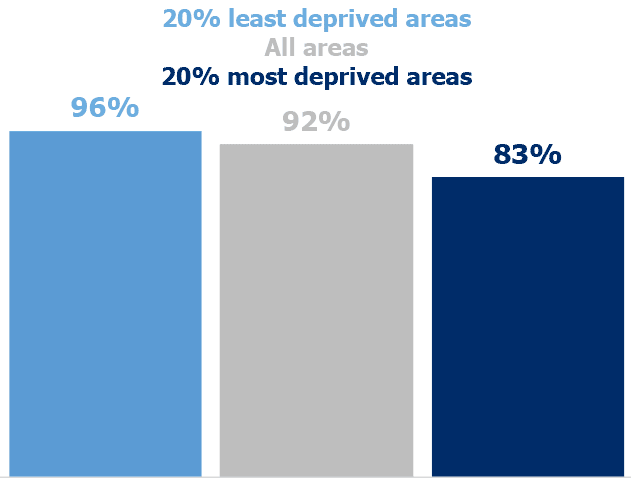
Internet use also varied with age, with older people less likely to use the internet (Table 4.6). Only 58% of those aged 75 or above and 87% of those aged 60 to 74 used the internet whereas nearly all adults aged under 60 used the internet.
18% of adults from social rented households did not use the internet. In contrast, only 3% of adults from private rented households and 7% of owner occupiers did not use the internet (Table 4.10)
The most common device used to access the internet was a mobile phone, such as a smartphone – with 86% of internet users accessing the internet this way (Table 4.13).
However this varied with age. For internet users aged 75 or over, the most common devices used to access the internet were a personal computer (73%) or a tablet (64%). For internet users aged 16 to 24 years old, the most common devices used to access the internet were a mobile phone (94%) or a personal computer (81%).
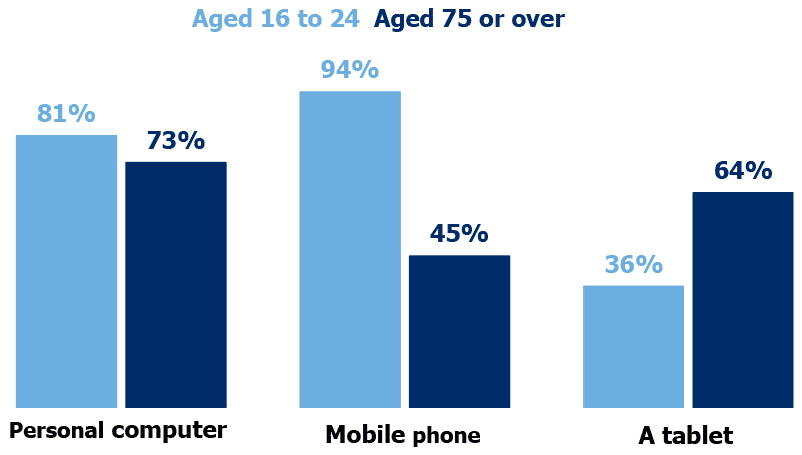
98% of adults who access the internet for personal use access it at home (Table 4.11). 70% of adults who access the internet for personal use do so when they are on the move via a mobile phone.
Searching for information and sending/receiving emails were the most common reasons for using the internet for personal use (Table 4.15). 95% of internet users used the internet to search for information, and 95% used it send and receive emails.
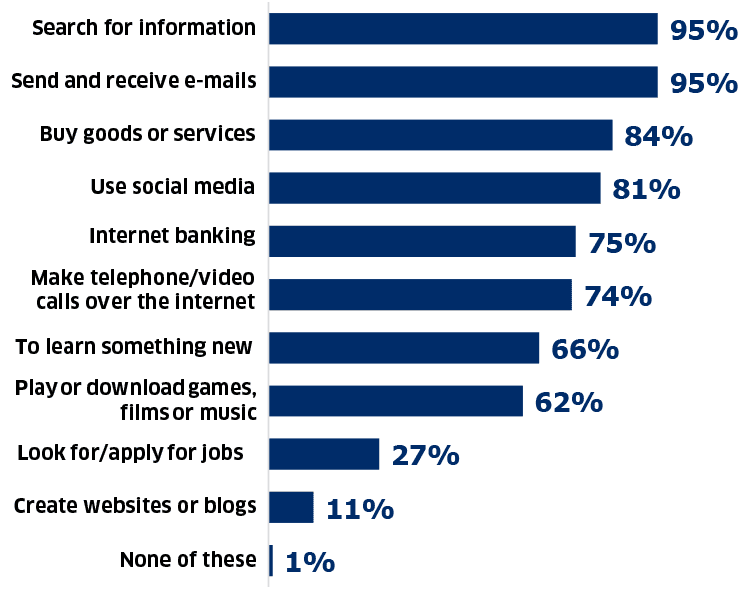
Adults living in private rented households were more confident than owner occupiers and adults living in social rented households in their ability to tell what websites to trust and to control their privacy settings online (Table 4.17).
Older adults were less likely to be confident in their ability to tell what websites to trust and to control their privacy settings online (Table 4.18).
Only 4% of adults who use the internet for personal use had not taken any online security measures (Table 4.21).
Adults who use the internet for personal use and live in the 20% least deprived areas were more likely to use different passwords for different accounts (77%) compared to those from the 20% most deprived areas (60%).
Similarly, those in the 20% least deprived areas were more likely to download and install software updates/patches when prompted (67%), compared to those from the 20% most deprived areas (49%).
Online security concerns impact internet usage, and this varied by age. The percentage reporting they were less likely to buy goods online due to security concerns increased with age (Table 4.22).
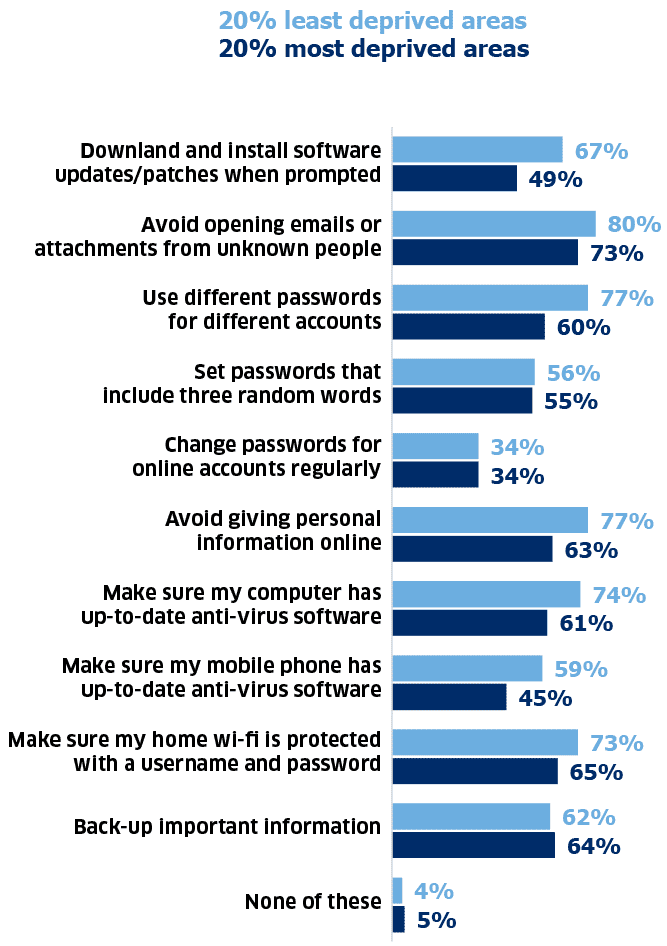
54% of households with internet access had some form of smart appliance in the house (Table 4.12).
The most common smart appliance was speakers, with 41% of households having them.
Whether or not a household with internet access owned smart appliances varied with deprivation. Households in the 20% most deprived areas were less likely to have any smart appliances, smart speakers, wearable technology or smart heating compared to those in the 20% least deprived areas.
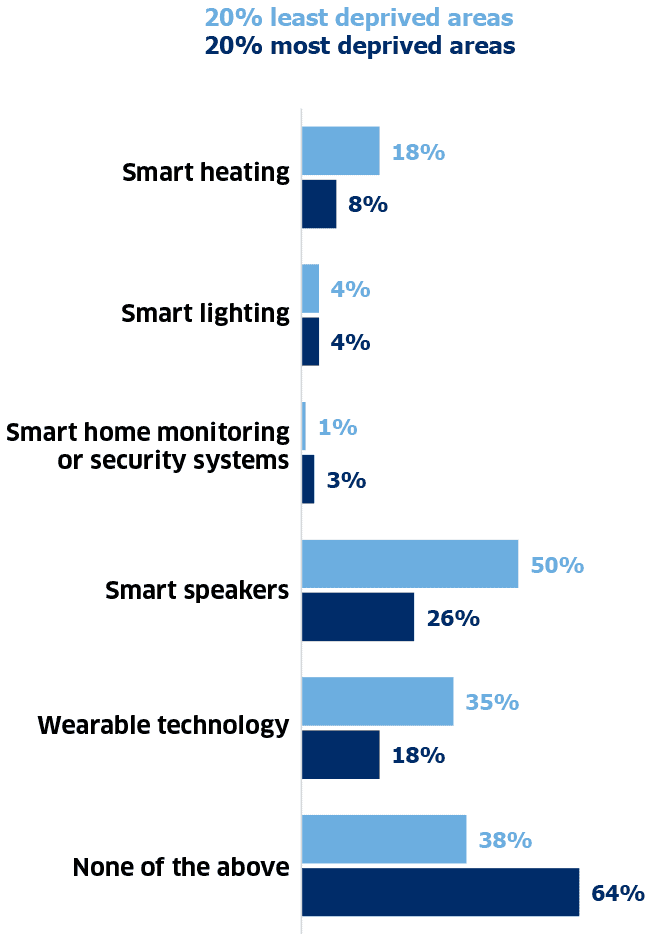
Contact
Email: shs@gov.scot
There is a problem
Thanks for your feedback